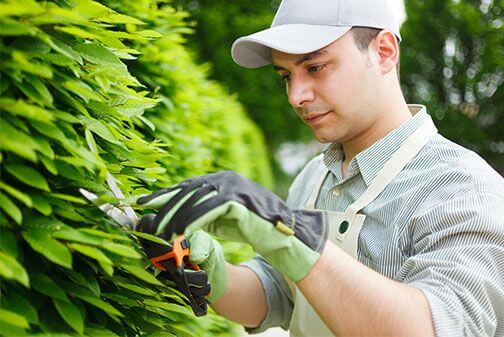Most Effective Plastic Substitutes for Sustainability
Posted on 05/05/2025
Plastic pollution has emerged as one of the most critical environmental challenges of our time. While plastic offers convenience and utility, its environmental footprint is daunting. As a result, researchers and innovators are continuously searching for effective plastic substitutes that not only serve the same functions but are also more sustainable. This article delves into some of the most promising plastic substitutes, addressing their benefits, challenges, and potential impact on sustainability.
Why Do We Need Alternatives to Plastic?
The widespread use of plastic has led to numerous adverse environmental effects, including:
- Pollution: Plastic waste is ubiquitous, infiltrating landfills, oceans, and even the air we breathe.
- Non-biodegradability: Most plastics take hundreds of years to decompose, leading to long-term pollution.
- Harm to wildlife: Animals often ingest plastic or become entangled in it, leading to injury or death.
- Resource Consumption: Plastic production relies heavily on fossil fuels, contributing to resource depletion and greenhouse gas emissions.

Promising Alternatives to Plastic
Several materials and innovative products are emerging as viable alternatives to traditional plastics. These alternatives aim to reduce environmental impact while providing effective solutions for various applications.
Biodegradable Plastics
Biodegradable plastics are designed to break down more quickly than traditional plastics when exposed to specific conditions such as heat, moisture, and microbial activity. Some common types include:
- Polylactic Acid (PLA): Derived from renewable resources like corn starch or sugarcane, PLA is used in packaging, disposable tableware, and medical devices. It decomposes into lactic acid, which is harmless to the environment.
- Polyhydroxyalkanoates (PHA): Produced by bacterial fermentation of sugars or lipids, PHA is completely biodegradable and is used in various applications, including packaging and medical implants.
- Starch-based Plastics: Made by blending starch with other biodegradable materials, these plastics decompose more rapidly and are used in applications such as food packaging and agricultural films.
Plant-based Materials
Plant-based materials are renewable, biodegradable, and often have a lower environmental impact than traditional plastics. Some notable examples include:
Hemp Plastic
Hemp fibers, known for their strength and durability, can be processed into bioplastics. Hemp plastic is biodegradable, non-toxic, and can be used for various applications, including packaging, automotive parts, and construction materials.
Mushroom Packaging
Mushroom packaging, developed from the root structure of mushrooms known as mycelium, offers a great alternative to polystyrene foam. It is compostable, lightweight, and has excellent insulation properties, making it ideal for packaging and building materials.
Bagasse
Bagasse is a byproduct of sugarcane processing and can be used to make biodegradable plates, bowls, and food containers. It is a sustainable alternative to plastic and is particularly popular in the foodservice industry.
Revolutionary Technologies and Innovations
In addition to plant-based materials, several revolutionary technologies and innovative approaches are being developed to tackle the plastic problem.
Seaweed-Based Plastics
Seaweed is a rapidly renewable resource that can be harvested without harmful impacts on the environment. Seaweed-based plastics are increasingly being used for packaging, single-use items, and even edible wrappers. These materials are biodegradable and can decompose naturally without leaving harmful residues.
Paper-Based Solutions
Paper is a versatile material that can be used to replace plastics in many applications. Techniques like waxing or coating can enhance the durability and water-resistance of paper-based products, making them more practical for uses such as packaging and disposable tableware.
Recycled Plastic Alternatives
While completely abandoning plastic is challenging, recycling existing plastic and creating products with recycled content can significantly reduce environmental impact. Innovations are making it possible to produce high-quality recycled plastic that can be used in a wide array of products, from clothing to construction materials.
Challenges and Considerations
While these alternatives hold great promise, they are not without challenges. Factors such as cost, scalability, and consumer acceptance play crucial roles in determining the feasibility and widespread adoption of these plastic substitutes.
Cost
Many sustainable materials and technologies are currently more expensive to produce than traditional plastics. Economies of scale, technological advancements, and increased demand will be critical in driving down costs.
Performance
Sustainable plastic substitutes need to match or exceed the performance of traditional plastics to be viable alternatives. This includes strength, durability, flexibility, and resistance to moisture and temperature variations.
Infrastructure
The compostability and biodegradability of many alternatives require specialized disposal infrastructure that is not yet widely available. Investment in waste management systems and facilities is essential to fully realize the benefits of these materials.

The Path Forward
Transitioning to more sustainable plastic substitutes is a multifaceted challenge that requires cooperation and innovation across industries, governments, and consumers. Policy measures such as bans on single-use plastics, incentives for sustainable packaging, and investment in recycling infrastructure can drive progress.
Additionally, consumer awareness and demand for sustainable products play a critical role. As more individuals and businesses prioritize sustainability, the market for plastic substitutes will grow, encouraging innovation and reducing costs.
Conclusion
The quest for effective plastic substitutes is imperative for curbing the environmental impact of plastic pollution. While no single solution can solve the problem entirely, a combination of biodegradable plastics, plant-based materials, and innovative technologies offers a promising path forward.
Collaboration, investment, and policy interventions will be crucial in accelerating the adoption of these alternatives and building a more sustainable future. The choices we make today will define the environmental legacy we leave for future generations. By embracing and supporting effective plastic substitutes, we can mitigate the devastating effects of plastic pollution and foster a healthier, more sustainable planet.










